中医:中国送给世界最好的礼物
2017-09-18吴星铎,苏莉,吴求等
国际朋友说WORLD SPEAKING
中医:中国送给世界最好的礼物
Traditional Chinese Medicine: The Best Gift China Sends to the World
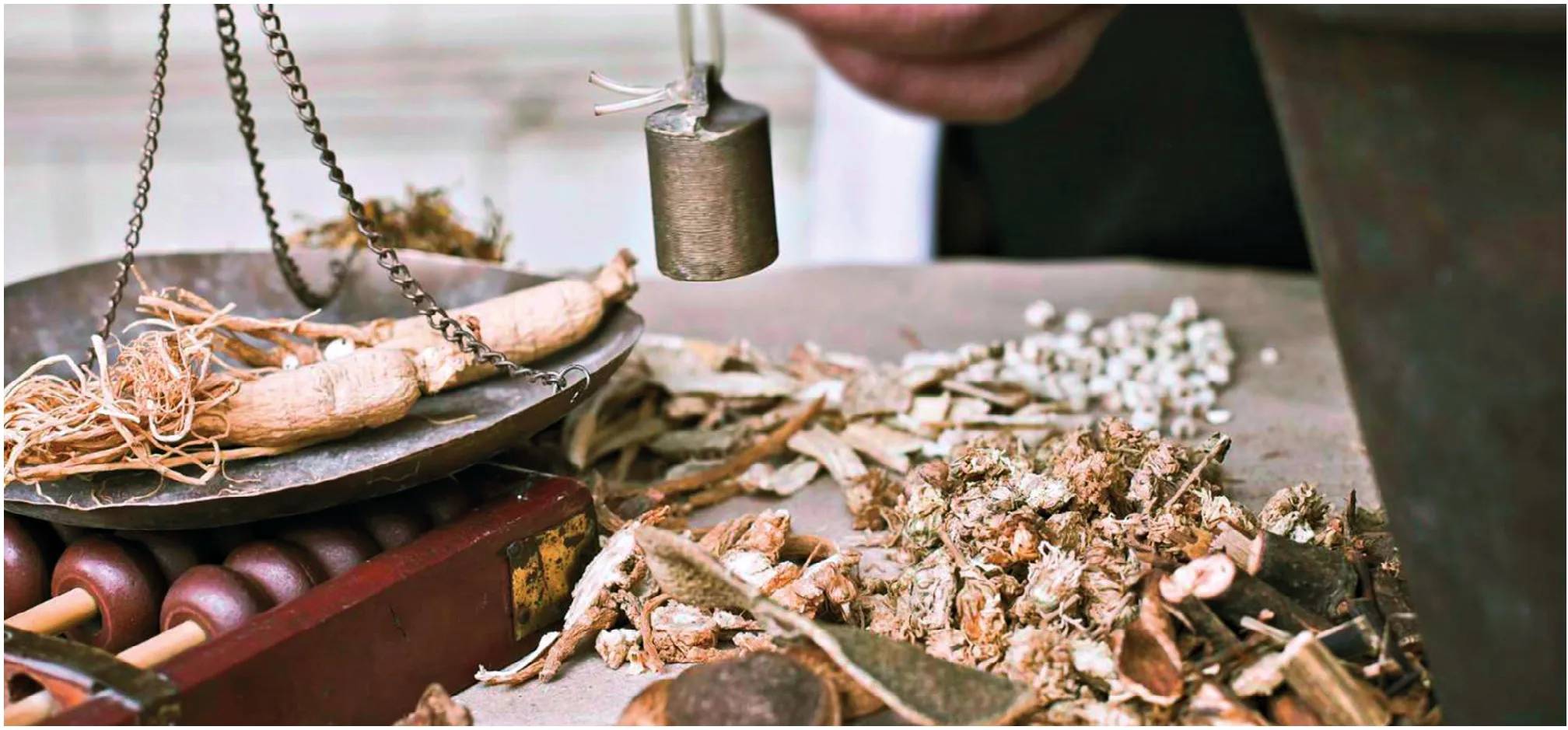
近年来,中国女科学家屠呦呦获诺贝尔奖、美国游泳名将菲尔普斯热衷拔罐等事情,让中医又一次次展现在世界面前。如今,如果看到外国留学生来中国学习中医,或者在异国他乡看到中医受人欢迎,这些已不会让人感到奇怪。那么,中医的魅力究竟在哪里?国际朋友们对中医有哪些体会?本期“国际朋友说”走进北京贵宾楼饭店的玉兰厅,与中医学博士王春勇对话中医与世界的缘分。
In recent years, Traditional Chinese Medicine (TCM) has constantly shown its value to the world. For instance, both Tu Youyou, the Chinese female scientist who won the 2015 Nobel Prize in Physiology or Medicine, and the renowned American former competitive swimmer, Michael Phelps, have showed interest in Cupping Therapy. Nowadays, Its glamour has long been spread into distant lands, and an increasing number of foreign students are coming to China to learn traditional Chinese medicine. Why indeed does traditional Chinese medicine attract the world, and how do most foreigners partake in it? Today at Yulan Suite in Grand Hotel Beijing, Dr. Wang Chunyong, an expert in traditional Chinese medicine, talked with our foreign guests about how TCM relates to the world.
主持人(Host):吴星铎,中国(Wu Xingduo,China)
嘉宾(Guests):苏莉,俄罗斯(Anastasia Sukhoretskaya,Russia);吴求,孟加拉国(Shayer S. Utsho, Bangladesh)
特邀嘉宾(Special Guest):王春勇(Wang Chunyong)(中医学博士,北医三院中医内科副主任医师,中华中医药学分会健康管理分会委员,世界中联痧疗罐疗专业常务理事。)(Doctor in traditional Chinese medicine, associate chief physician of the Traditional Chinese Medicine Department at Peking University Third Hospital, member of China Association of Chinese Medicine, and executive member of World Federation of Chinese Medicine Societies.)
最能代表中国的文化元素
苏莉:说起中医,我脑海中第一印象是按摩,我经常做中医按摩,我觉得这会让我特别放松,给我疲惫的身体充电。除此之外拔罐也很神奇。
吴求:谈到中医,浮现在我脑海中的首先是针灸,然后是推拿。我两三年前和一个中国的推拿师学过将近一个月,慢慢地体会到穴位、经脉的存在,这是我感到最神奇的地方。
王春勇:中医是最能代表中国的一个文化符号。根据中国外文局对外传播研究中心的一份中国国家形象全球调查报告,最能代表中国的文化元素排名前三的分别是:中医、武术、中餐,中医居首。
The Best Cultural Embodiment for China
Anastasia: The traditional Chinese massage first came to my mind when speaking of TCM. I go for a traditional Chinese massage frequently to refresh myself. Cupping therapy is another magical way to get relaxed.
Shayer: Acupuncture and traditional Chinese massage are the fi rst two things coming to my mind. I learned traditional massage from a Chinese massagist two or three years ago and have been deepening my comprehension towards the very existence of different acupoints and meridians of the body, which is truly a magical process for me.
Wang: Traditional Chinese medicine is the best cultural embodiment for China. According to a global report of China’s national image by Center for International Communication Studies, the top three cultural elements representing China are Traditional Chinese Medicine, martial arts, and Chinese food, in which traditional medicine ranks at the top.
神奇的中医
主持人:刚刚苏莉、吴求都谈到了针灸、按摩、拔罐,这些中医技法是建立在什么基础上的?
王春勇:针灸、按摩、拔罐都是建立在中国的经络理论上。现代医学对血管、淋巴、神经、肌肉、骨骼等在解剖学意义上的研究都非常透彻。但是对于经络理论,现代医学还是没有很好的证明。例如中医说的“气”,目前没有任何科学仪器能够探测到。可是我们每个人都生过气,劳累的时候就觉得少气无力,愤怒的时候可以怒气滔天。我们悲伤,垂头丧气,困倦的时候没有精气神,这些就是气的体验。在临床上,患者自己可以感觉到气的存在、瘀积,但仪器测不出来。所以,人的神经系统比机器设备还要灵敏。
主持人:针灸、按摩尤其跟穴位有关系。中国的武侠小说、影视剧当中,也有很多关于穴位的描写,比如点到哑穴就不能说话,点到笑穴人就一直笑,那么关于穴位,在中医里确实存在吗?
王春勇:确实存在。点穴相当于调动气的方式。简单来讲,比如我们用言语就可以调动你的情绪,比如一部情节跌宕起伏的电影,它感染了你,你就哭了,笑了。专业人士可以调动你的状态,调动你的气的运行。穴位就是这个原理,气会积于一个点,我扎或者点在这一个点上,就能改变气的运行。
主持人:针灸是怎么传播到世界上的?
王春勇:针灸的传播可以上溯到20世纪70年代,当时中美关系破冰,除了著名的“乒乓外交”之外,中国当时还给远道而来的美国客人展示了针灸麻醉技术。1971年5月,耶鲁大学、麻省理工学院两位科学家访华,见证了中国医生为经过针灸麻醉的病人做手术。后来当时《纽约时报》的专栏记者赖斯顿(Reston)为了解决阑尾手术后的疼痛和胀气问题,在中国尝试了针灸和艾灸,治好后他专门写了一篇报道,这让针灸一下子就火了。经过媒体的大肆宣传,针灸一度变得神秘化了,传说那时在美国干一个月针灸,就能买一套房子。后来热劲过了,才开始规范化,制定法规,创办学校。美国第一所针灸学校成立于1975年,全美针灸考试实施于1982年。
Magical Chinese Medicine
Host: Several traditional Chinese medical techniques were mentioned like acupuncture, Chinese massage, and cupping therapy, what are they based on?
Wang: Acupuncture, Chinese massage, and cupping therapy are all based on the Chinese theory of body meridians. Thorough anatomical researches concerning the vascellum, lymph, nerve, muscle, and bone have been done in modern medicine. However, theories of meridians and collaterals haven’t been convincingly proved yet. For instance, the conception of qi in traditional Chinese medicine remains undetectable by scientif i c instruments, yet the feeling of it is sensible-when we are tired, it is a state which can be described as being the lack of qi in Chinese. We feel sorrow, upset (chui tou sang qi), and become lacking in spirit and energy (jing qi shen). These are all of which are demonstrations of various states of qi in the human body. A patient in his clinical session is able to sense the very existence and deposition of qi. The fact is that the neural system in the human body can operate in a more keen way than any mechanical equipment.
Host: Acupuncture and Chinese massage both have a lot to do with acupoints of the body. There are many related descriptions about acupoints in Chinese martial arts, fi ction works, movies, or TV plays. For example, a character cannot speak after being hit on his acupoint for muteness, or will have a nonstop laugh when hit on his acupoint for laughing. Well, do these acupoints truly exist in traditional Chinese medicine?
Wang: They do. To hit an acupoint is to deploy qi in the human body. To put it simply, you can be motivated by a movie full of dramatic plots; you cry and laugh as the story goes. Well, medical experts could also motivate you as a movie does by deploying qi in your body. Acupoints run with the deployment and are built up upon a critical point in human body; by inserting this particular point the qi in your body can be regulated.
主持人:去年的里约奥运会,大家都看过菲尔普斯背后有拔罐印记的报道,请您为大家分享一下拔罐方面的知识。
王春勇:事实上,除了菲尔普斯之外,加拿大歌手贾斯汀·比伯(Justin Bieber)、奥斯卡奖的获奖演员格温妮斯·帕特洛(Gwyneth Paltrow)、克里斯·布鲁克斯(Chris Brooks)等等,都有中医拔罐的经历,大家可以在网上找到他们带有拔罐印记的照片。其实说起来,起源于中国的拔火罐已经有大约3000年的历史,在埃及、中东等地也被广泛应用。拔罐在古代典籍中也被称为“角法”。是用挖空的兽角来吸拔脓疮的外治方法。晋代葛洪《肘后备急方》就有角法的记载。拔罐的时候,以罐为工具,用燃火、抽气等方法产生负压,吸附于体表,造成局部瘀血,达到通经活络、行气活血、消肿止痛、祛风散寒等效果。特别是夏天,人体的毛窍腠理都是打开的,但夏天的时候空调开得多,冷气反而多,就更容易感受风邪。这时候身体如果不舒服,“空调病”也好中暑也好,拔罐是一个非常好的方法。冬天有暖气,有汽车,有羽绒服,人们会有意识地防寒,所以受到的寒气反而不如夏天。
主持人:中国女科学家屠呦呦获诺贝尔奖对于中医走向世界意味着什么?
王春勇:屠呦呦在2015年获得了诺贝尔奖,世人都知道了中国还有这样一个大宝库就是中药,这对中医来说是一个大事件。屠呦呦先驱性地发现青蒿素,开创疟疾治疗新方法,并成为疟疾标准治疗方案,世界上数亿人受益。她的灵感就来自于晋朝葛洪的《肘后备急方》,原文有“青蒿一握,以水二升渍,绞取汁,尽服之”,意思是说青蒿一把,绞了,不用煮,取汁就可以提取这个东西。葛洪,自号抱朴子,是东晋时代著名道教哲学家、著名医药学家。
Host: How was acupuncture spread into other countries?
Wang: The history of acupuncture dates back to the early 1970s, when the ice between the US-China relationship just got broken. Apart from the renowned Ping-Pong Diplomacy, China also showed its American guests the acupuncture narcotherapy. In May of 1971, two scientists from Yale and MIT visited China and observed the whole acupuncture operation done by a Chinese doctor. Later, a columnist for New York Times, called Reston, tried acupuncture and moxibustion to ease the pain and flatulence caused by an appendix operation, and his report making acupuncture a hit at that time. However, the technique was so exaggerated in his report and mystified by local media that it was said that an acupuncture doctor’s salary for one month can afford a grand mansion in America. Afterward, people’s passion on acupuncture became toned down and this technique started to be regulated by law and related technical schools appeared. The fi rst Academy for acupuncture in the U.S. was founded in 1975, while exam in medical acupuncture was put into effect later in 1982.
Host: Michael Phelps’ passion for cupping therapy became news in Rio Olympic Games last year, please share with us some information on this therapy.
Wang: In fact, Phelps isn’t the only celebrity who is passionate about cupping therapy-Canadian singer Justin Bieber, Oscar winner Gwyneth Paltrow, and Chris Brooks are all member of the group. Pictures of their therapy processes can be searched out online. Cupping therapy has enjoyed a developmental history in China for around 3000 years, and was widely put into practice in foreign countries, including in Egypt and the Middle East. It was also named Jiao Fa in ancient Chinese records, referring to the specif i c external treatment of using hollow animal horns to cure abscesses. Such treatment can be found in a book named Handbook of Prescription for Emergency written by Ge Hong during the Eastern Jin dynasty. Through suction, the skin is drawn into the cup by creating a vacuum in the cup placed on the skin over the targeted area. The vacuum can be created either by the heating and subsequent cooling of the air in the cup, or via a mechanical pump to cause local congestion so as to activate the meridians and blood, relieve swelling, and expel body coldness. In summer it’s much more effective as all the pores and interstitial spaces among muscles will be relaxed. In this season, people tend to overuse the air conditioner and are susceptible to sunstroke, for which cupping therapy can be a great treatment. However, people consciously prevent being cold in the winter, thus tend to be less cold than in the summer.
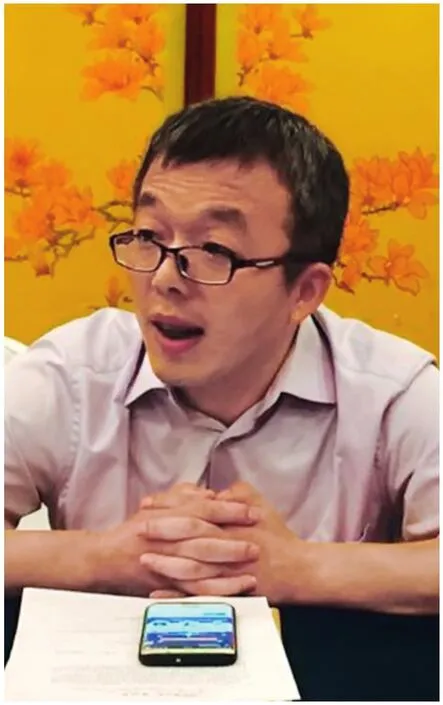
王春勇老师现场分享
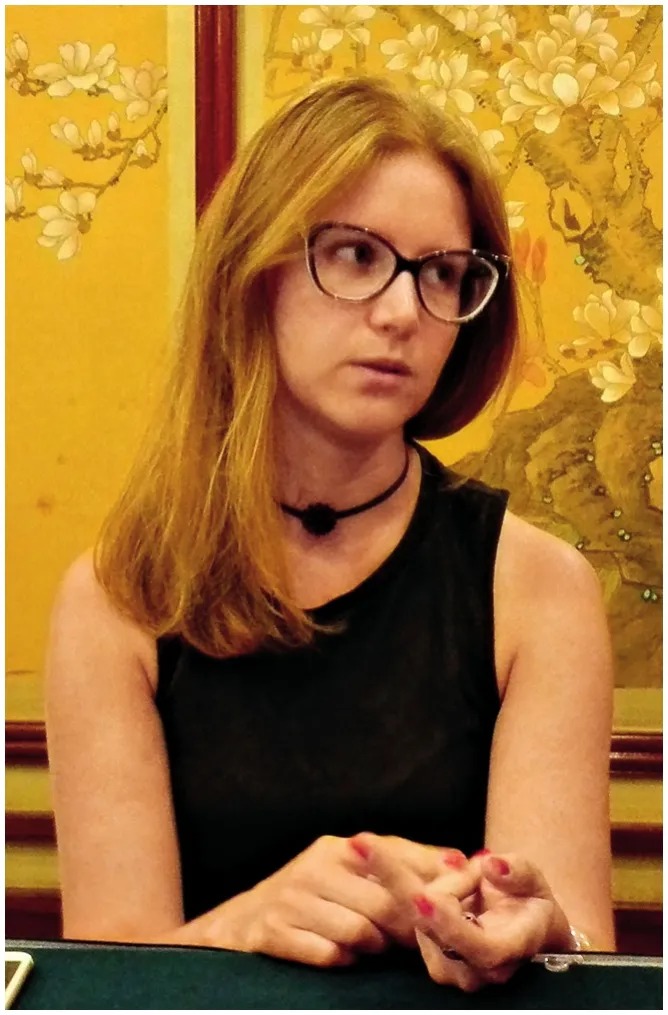
苏莉现场发言
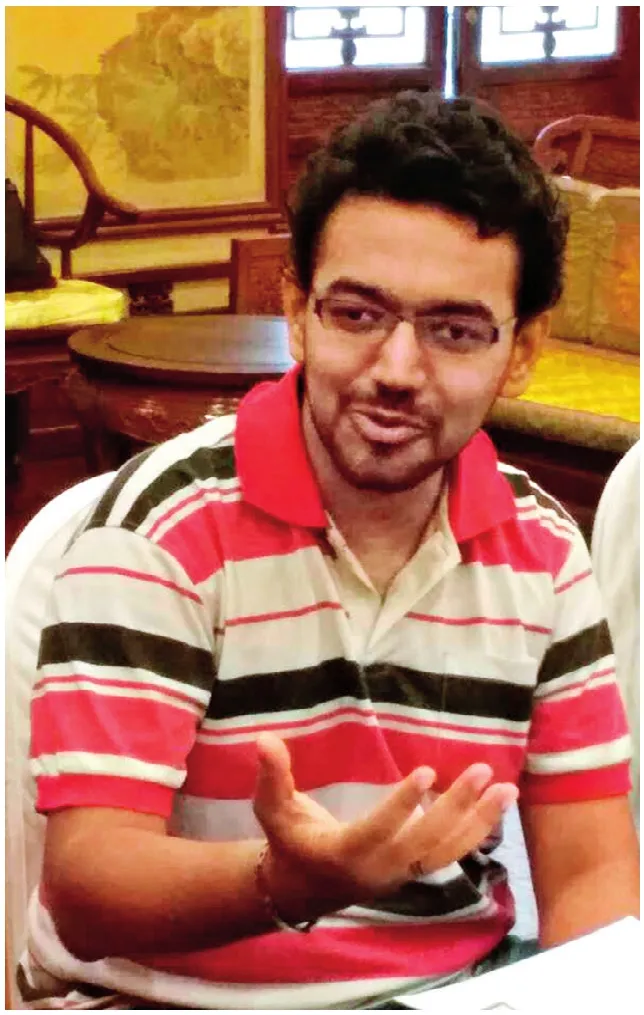
吴求现场发言
中药名字听起来很美
主持人:中药名字都特别美,我记得《倚天屠龙记》中张无忌跟蝶谷医仙胡青牛学医,有张药方是当归、远志、生地、独活、防风五味药,这些名字非常艺术,中药的名字有什么讲究吗?
王春勇:中药名字本身就和药性、药的功用合在一起的,像当归,是调理月经的,该来的时候没有来,所以要用药给它引回来。远志可以安定神志,可以把神安定住。独活没有太多的说法,但它本身是一个祛风湿的药,肩背的酸痛,可以用发散的药把疼痛缓解。中药中还有一味药叫五灵脂,听名字是不是特别好听?其实是什么呢?是复齿鼯鼠(寒号鸟)、飞鼠或其他近缘动物的粪便,你看中药起的名就非常艺术,患者一看名字很美,包裹住吃也就不觉得难吃了。这和《西游记》里孙悟空将马尿称为“马兜灵”一样。
Host: Chinese female scientist Tu Youyou won the 2015 Nobel Prize in Physiology or Medicine, what does that mean to the world?
Wang: It has brought Chinese herbology to the world, which is truly big news for traditional Chinese medicine. She is the fi rst person to ever discover artemisinin (also known as qinghaosu) and invent its treatment of malaria, which is regarded as a standard treatment which benefits hundreds of millions of people. She actually got her inspiration from Handbook of Prescription for Emergency by Ge Hong (also named Bao Puzi), a well-known philosopher in Daoism and a medical expert during the Eastern Jin Dynasty of China. A detailed extraction method of artemisinin was recorded in the book, which is to tightly grasp a bundle of artemisia, twist it for its sap, and extract artemisinin from it.
中医是一种更高级的语言
吴求:推拿——从体验到精通
说起我本人,尤其喜欢推拿。我1997年到2006年期间在北京,2006年回到孟加拉国,因为那时候年纪也小,水土不服。那时候有一个中国推拿师住在达卡,曾经给当时孟加拉国的总理做过推拿,家人就请他给我做了一个月的推拿,我适应力就强了很多。就算到现在,我到了一个新环境也能很快适应。那段时间我也觉得很神奇,于是就跟着他模仿、学习。
Artistic Names for Chinese Medicine
Host: Most of the traditional Chinese medicines enjoy beautiful names. In the classic Chinese novel, The Heaven Sword and Dragon Saber, Zhang Wuji learned medicine from master Hu Qingniu.Several prescriptions were mentioned in the story, like Dang Gui, Yuan Zhi, Sheng Di, Du Huo, and Fang Feng, all of which are pretty artistic. Are there any rules for TCM naming?
Wang: The names of traditional Chinese medicine themselves imply the properties and effects of different kinds of medicines. For example, Dang Gui literally means “should come back” in Chinese, the medicine is normally used to regulate menstruation, especially to call back normal menstrual cycle. Yuan Zhi is used to calm the heart and induce tranquilization. Du Huo is used to dispel wind-dampness, alleviate pain, and release exterior ailments. Another type of traditional medicine is called Wu Ling Zhi (Faeces Trogopterori), a very beautiful name, right? Well, it is originally the excrement of bats. Therefore, the artistic names actually make the medicines more acceptable to patients. A similar case was in the classic Chinese novel, Journey to the West, where the monkey king called the horse urine Ma Dou Ling, another artistic name, to cover for its original essence.

本期“国际朋友说”讨论现场
后来,我开始给我父母和弟弟做按摩,他们觉得非常有效。有亲戚朋友来到家里,稍微有个头疼什么的,都会找我给他们按摩推拿。我就越来越有经验了,因为按着按着其实是能感觉到哪里瘀积、哪里松弛的。现在我主要对头部、肩部和背部的穴位比较了解。
我更好奇的就是中医的“气”,虽然气是一个虚的概念,没有仪器测量出来,没有数值,但我们能直接感受到它,也能直接用这个概念施加各种治疗,所以特别神奇。我本人是计算机专业,我习惯用0和1的概念去理解一个东西,虽然中医最细节的部分可能没解释出来,但是我认为,中医是一种更高级的语言,就像C++或者Java语言,我们虽然说不清原理,但是能直接运用。
A More Advanced Language
Shayer: Chinese Massage—from an amateur to an expert
I am a huge fan of the Chinese massage. I stayed in Beijing from 1997 to 2006 and went back to Bangladesh in 2006. At that time I was endemic due to young age. Luckily, my family invited a Chinese masseur who served for the Prime minister of Bangladesh then. He gave massages for me for only one month and I quickly became more accustomed to the new environment. Thus, traditional Chinese massage became so magical to me and I began my imitation and learning.
苏莉:最爱中医按摩
我自己每周都会去做按摩。每次在办公室坐的时间太长,腿就感觉很累,所以一般每周都去做按摩。对于中药,我没有特别的经历,试着吃过,没有发现见效——可能中药需要长期的调理吧,我毕竟习惯了西药,想迅速把病治好。
针灸的话我小时候在俄罗斯做过,那时候我还在上小学,因为视力不好,小孩嘛,吃不了药,父母就带我去医院。我每年都会去医院,就是扎针,扎在头上,当时倒是没感觉太疼,包括拔罐也尝试过。
结语
王春勇:现在有一种现象,一些外国朋友只在中国学了很短时间中医,就回到自己国家开设诊所。如果学得不到位,会有损中医的名誉,我们还是要慢慢加强医师的认证,给大家提供更好的服务。毕竟中医就是通过健康搭起一座桥,用文化的交融让大家活得更好更健康。毕竟,中医是中国送给世界人民的礼物。
(中文整理:吴星铎、王兆峰;英文整理:闫彩萍。鸣谢北京贵宾楼饭店提供场地支持。特别鸣谢:崔岱远。)
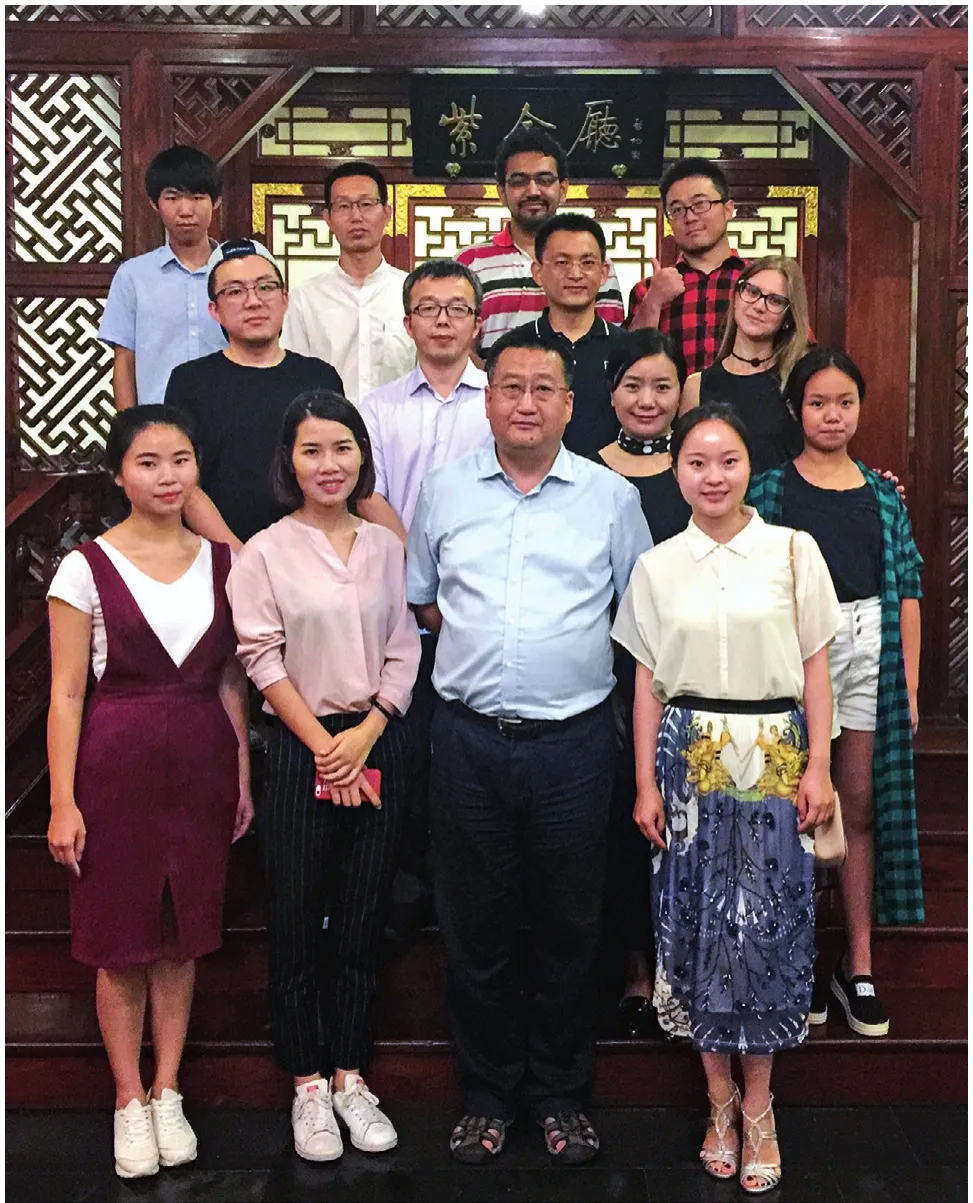
本期“国际朋友说”参与者合影
Afterward, I started to give massages for my parents and brother, which were very productive. I gradually became more skilled as I gave massages for my relatives even for a slight fever. Actually, one can sense the locations of pain during the treatment, whether for deposition or relaxation. Currently, I’m specializing in the acupoints of the head, shoulder, and back.
What made me curious is the very idea of qi in traditional Chinese medicine. Although it is a virtual concept which is undetectable, we are able to directly sense it and apply it to various treatments. I majored in computer science, thus I am used to approaching and understanding a concept in a quantitative way. However, Traditional Chinese Medicine can’t be explained with data in detail. From my point of view, TCM has a more advanced language, whose principle can’t be clarif i ed yet it can be put into practice like C++ or Java.
Anastasia: Traditional Chinese Massage is My Favorite
I go for a Chinese massage every week. I tend to feel exhausted after a long-day work at my office, and my legs have become numb. I don’t have specif i c experience with Traditional Chinese Medicine, but I did attempt to try it, only to fi nd it not effective enough. Perhaps a longer process is needed for the medicine to take effect, but I regard myself a more western-medicine person and would like a more rapid treatment.
I tried acupuncture once when I was little in Russia. I was in primary school and had a poor eyesight, so I was basically a regular customer of Russian doctors. I went to the hospital once a year to get acupuncture therapy on my head and tried cupping therapy as well, and both therapies were not that painful according to my memory
Conclusion
Wang: Nowadays, some foreign doctors learn Traditional Chinese Medicine for only a short period of time and go back to their own country to run a clinic. If they are not capable of fully practicing TCM, the reputation of it will be somewhat damaged. Therefore, the accreditation system for qualif i ed TCM doctors shall be perfected to provide better medical service. After all, the traditional Chinese medicine is a bridge connecting Chinese culture with human health, and it’s the best gift China sends to the world.
(Chinese text editor: Wu Xingduo, Wang Zhaofeng.English text editor: Yan Caiping. The meeting place was provided by Grand Hotel Beijing. Special thanks: Cui Daiyuan.)
